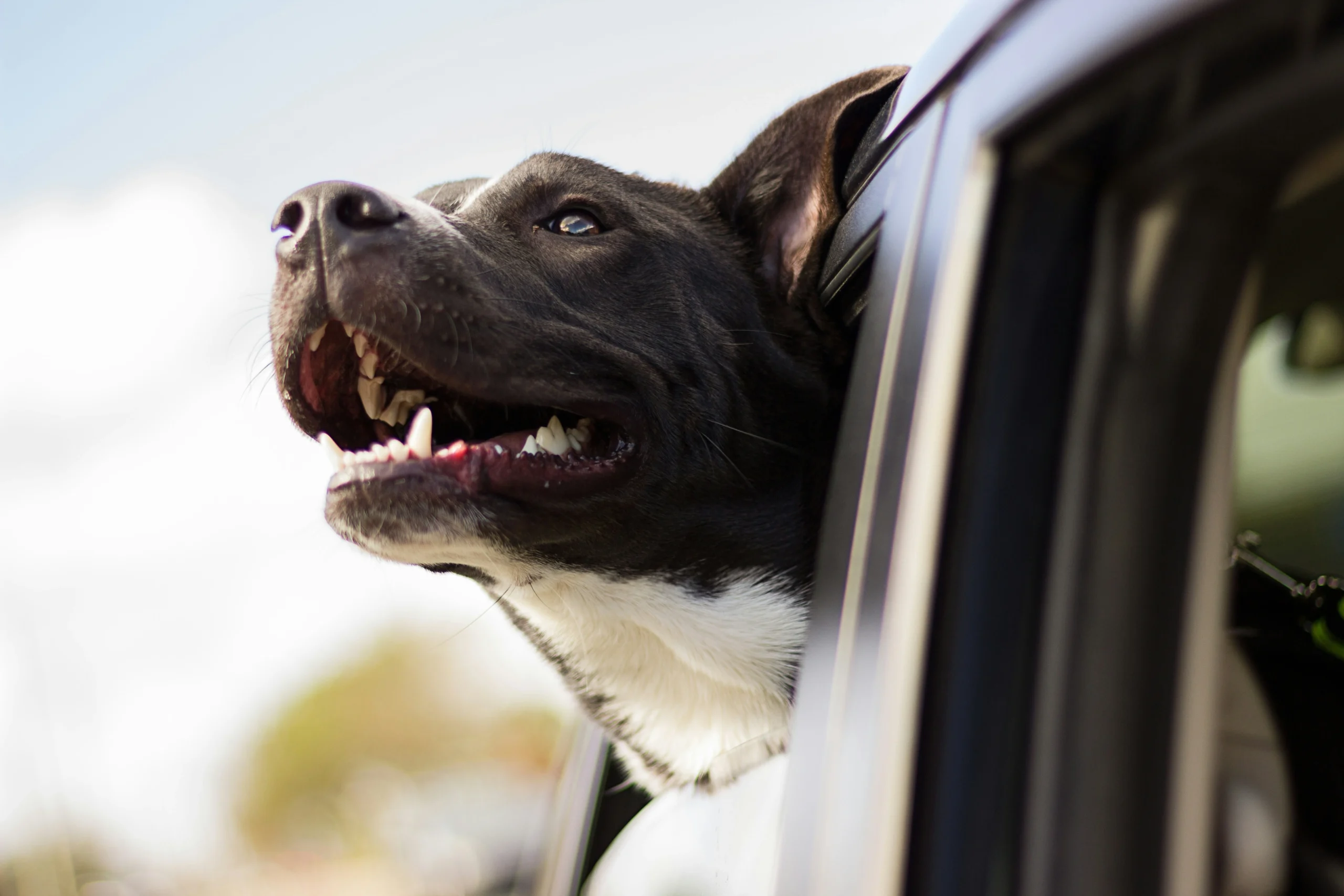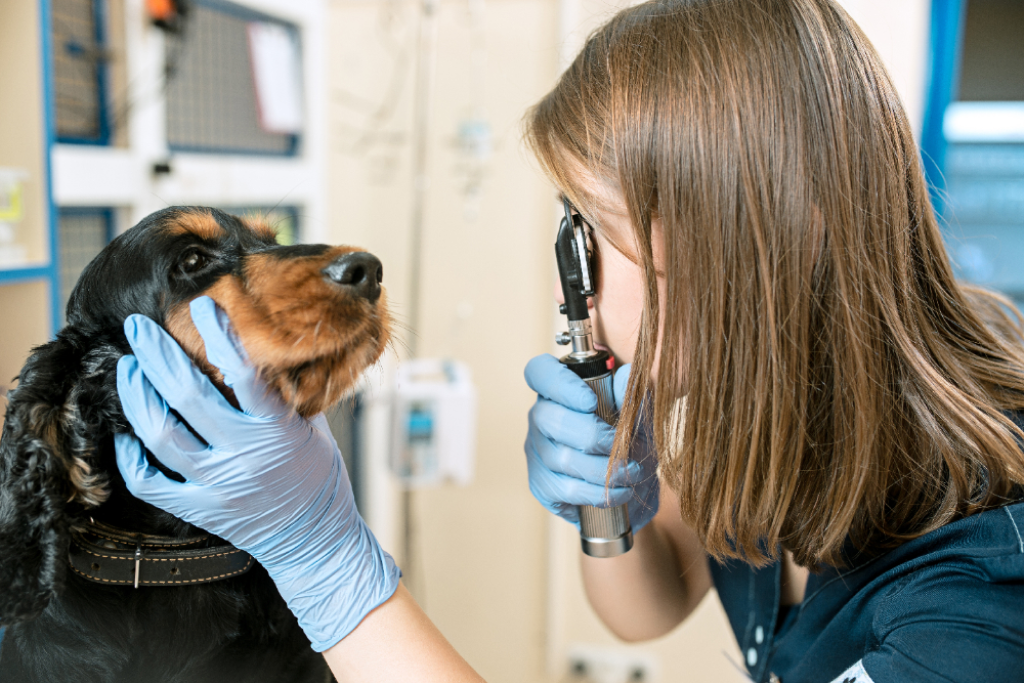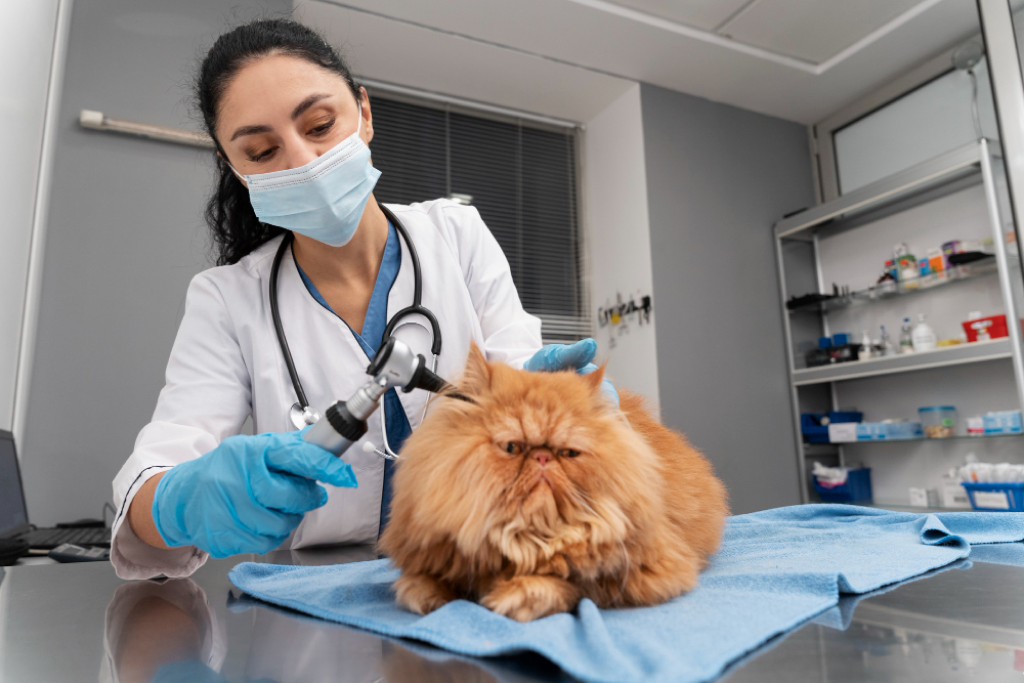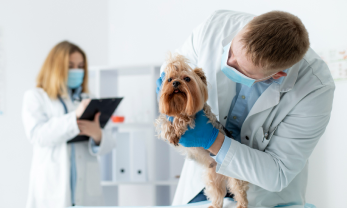Should I Worry About Lumps On My Pet?
It is quite common for pets to get lumps and bumps throughout their lifetime. These can often be a cause of concern or worry for any pet owner. Whenever you notice a lump in your pet’s skin, the first thing you should do is contact your vet who will be able to get to the bottom of the cause.
Our guide will take you through some of the most common lumps in cats, dogs, and rabbits, and explain when you should worry about lumps on your pet.
What Do Lumps Look Like?
Lumps can range from benign lumps such as intradermal cysts and warts to serious tumours such as mast cell tumours and malignant squamous cell carcinomas. The earlier a lump is detected and a diagnosis is reached the better the prognosis. Many lumps look similar in appearance and often we may advise you that we need to perform an aspiration from the lump to obtain a diagnosis. This is a simple procedure and can often be performed during your appointment.
The skin surface is cleaned and sometimes hair removed, a needle is inserted into the lump and directed at different angles to obtain a sample of the cells within the lump, this is then put onto a microscope slide and sent away for analysis. This may be all that is needed to obtain a diagnosis and formulate a treatment plan for your pet. Sometimes a surgical biopsy is required, this is performed under a sedation or short anaesthetic and a stitch is placed into the skin after the biopsy is removed, the sample is sent to the lab for analysis.
Benign Lumps and Bumps
Benign lumps and bumps should not spread beyond where they develop and the majority of benign lumps are of little concern. Over time, however, they may grow to restrict movement, affect the overlying skin, or cause irritation for your pet. Even if you think your pet’s lumps are benign, it’s always best to have it checked over by a vet to be sure. Contact your vet immediately if you notice any changes to existing lumps.
Some common benign lumps and bumps in cats, dogs, and rabbits include:
Lipoma
Lipomas are benign fatty lumps that commonly develop in cats and dogs. They don’t typically develop in rabbits, but do occasionally occur. Lipoma lumps generally sit just under the skin and tend to be soft and moveable. Lipomas vary in size, but can grow to be fairly large and appear almost anywhere on your pet’s body. They are usually nothing to worry about, however you should still have them checked out by a vet to ensure that it is not a cancerous growth.
Abscesses
An abscess is a pus-filled lump or pocket. Often, abscesses will occur as a result of bites, foreign bodies or other traumas. These types of lumps are often painful but easily treatable. If you notice wounds or bite marks on your pet, contact your vet immediately to ensure proper care. In more minor cases, cleaning the wound properly may be effective.
Hives
Hives are small red bumps on the skin, usually attributed to an allergic reaction to food, insect bites or a contact allergy. Because of your pet’s hair, hives can sometimes be difficult to spot, but you may notice small raised tufts of hair, or localised irritation and sensitivity. If the hives don’t go away after a few hours, or more lesions occur, you should contact your vet as the condition can progress to anaphylactic shock and affect their breathing.
Cysts
Cysts, also known as sebaceous cysts, are a common lump on cats, dogs, and rabbits. They are caused by the sebaceous gland that produces oil to maintain your pet’s fur. Sometimes, this gets clogged and causes small swellings under the skin which can become infected. Most cysts will burst and heal on their own, but some may need to be drained or surgically removed. Cysts are usually nothing to worry about, but very rarely can develop into a tumour.[/vc_column_text][vc_column_text]
Adenomas
Perianal Gland Adenomas
Perianal gland adenomas are some of the most common types of adenomas in dogs, and is more common in males than females. Cats can also be afflicted, but this is less common. These adenoma lumps are benign, slow growing and usually sit on the skin next to the anus. In males, treatment typically involves castration and removal of the mass.
Skin Tags and Warts
Another common type of adenoma, skin tags and warts will usually be nothing to worry about, and will rarely require treatment unless they bleed regularly or get in the way of grooming. If treatment is required, cryosurgery may be utilised.
Granulomas
Granulomas are raised red bumps that may have a crust. They can also be found under the skin and feel firm. Granulomas can often appear similar to aggressive tumours, so it’s best to have them checked out immediately if you notice this type of lump on your pet.
Haemangiomas
Not to be confused with Haemangiosarcomas which is a very aggressive cancer with a high mortality rate. Haemangiomas are benign tumours, most commonly found in dogs. They affect the blood vessels and soft tissues. A biopsy should be conducted immediately.
Parasites and Stings
Some parasites such as ticks will leave little lumps on the skin of your pets. Ticks are easy to remove with a tick hook, and the bump should go away with time. It is worth being aware of illnesses attributed to ticks such as Lyme disease that your pet could pick something up from them.
Similarly, stings from bees and wasps may leave raised bumps on their skin, but are usually not dangerous unless they were stung on the face, nose or near the mouth, if they have been stung a lot of times, or if your pet has an allergy to stings.
Malignant Lumps and Bumps in Cats, Dogs, and Rabbits
Malignant lumps and bumps have the potential to spread throughout the body, affecting skin, organs, bones and the brain. Whilst you should worry about malignant lumps, regular vet check ups and grooming practises will help to catch them in the early stages.
Mast Cell Tumours
Mast cell tumours are tumours of the immune system and blood cells and are responsible for 25% of all tumours in cats and dogs. Unfortunately, Mast Cell Tumours look like many other tumours and are hard to diagnose yourself, so it’s vital to have any growth checked out by a vet.
Fibrosarcomas
Fibrosarcomas are locally invasive tumours that can mimic the look and feel of lipomas. This type of tumour can occur in cats, dogs, and rabbits, but is particularly common in larger breeds of dogs.
Melanomas
Melanomas in cats, dogs and rabbits are much less malignant than in humans, but still warrant concern. The tumours originate from pigment-producing cells which may develop pigmented growths. Melanomas can be benign or malignant, and should always be reported to your vet for testing.
Squamous Cell Carcinomas
Often caused by too much sunlight, squamous cell carcinomas are cancerous growths on the hairless parts of your pet’s body such as the eyelid, lips and nose. They present as raised, crusty sores. Usually, squamous cell carcinomas will grow by local invasion and should be removed as soon as possible. Left too long they can become painful, cause deformities and can spread to other organs.
Breast Tumours (Mammary Carcinomas)
Mammary carcinomas are malignant breast tumours, most common in non-desexed cats and dogs, and are becoming increasingly recognised in rabbits. Mammary carcinomas spread by metastasis to the lymph nodes, other mammary glands and organs. Lumps may not be visible, but masses will be present under the skin and will feel firm and nodular.
Bone Tumours (Osteosarcomas)
Bone tumours can develop in cats and rabbits but are more common in large male dogs. The tumours can cause lumps to grow on the bone, usually in the limbs, and will often spread to other parts of the body by metastasis. Sadly, treatment will usually involve surgery, and may include amputation.[/vc_column_text][vc_column_text]
Signs that it’s Time to Call the Vets
You should always get any lump or bump that you find on your pet checked out by your vet, even the smallest lump could be serious. However, you won’t always notice lumps, particularly if your pet’s fur covers them. Regular vet check ups and grooming sessions will help to catch anything that is easy to miss at home.
Warning signs to look out for include:
- Large Lumps
- Sudden appearance
- Changes in size, colour
- The lump is black or purple in colour
- Irritation
- Open sores or ulcerations
- Discharge or pus
- Other signs of illness, including vomiting, loss of appetite, and generally not acting like themselves
How We Diagnose Lumps and Bumps
To determine what your pet’s lump is, your vet will perform one or more of the following:
Fine Needle Aspiration (FNA)
A small needle is inserted into the lump to suck out cells. These cells will then be deposited onto a slide, stained, and examined under a microscope. In some cases, this will need to be sent to a specialist for confirmation. Around 95% of lumps and bumps can be diagnosed this way.
Impression Smear
If the lump discharges any fluids, your vet many rub a slide onto the lip and examine as with an FNA.
Biopsy
If an FNA is inconclusive, your vet may decide to perform a biopsy of the lump. This may be an incisional biopsy where your pet will be sedated or be given an anesthetic and a small piece of the lump will be removed for examination, or an excision biopsy where the entire lump is removed for examination and the margins are thoroughly assessed to check that nothing has been left behind.
Lab Test
If the lump contains fluid, this can be extracted, analysed under a microscope (cytology) and sent to a lab to culture.[/vc_column_text][vc_column_text]
Treatment for Lumps and Bumps
Treatment will vary by the type of lump, location, size and severity. These may include:
Lumpectomy
A lumpectomy is surgical removal of lumps and bumps. This is usually performed on benign and early stage malignant tumors.
Partial Removal or Debulking
A surgeon may only remove part of a tumour if it is located in a difficult location.
Radiation
Radiation therapy is used for malignant lumps that cannot be surgically removed. This process uses high energy radiation to shrink or kill cancerous cells.
Chemotherapy
Chemotherapy is often used in addition to surgery and radiation for malignant lumps. This is the use of drugs to kill cancerous cells throughout the entire body.
In summary, any lumps and bumps that develop on your pets should be taken seriously. Ensure that your pet attends regular check-ups, and make sure to contact us immediately if you notice any of the warning signs we mentioned in this article. Catching cancerous lumps early can make a big difference.
Book an Appointment with Knutsford Vets
Based on the diagnosis of a lump it may be possible to monitor benign lumps for change in size or appearance or it may be advised that more treatment is required.
Lumps often need surgical removal, depending on the type of lump this may be a simple procedure or may require other tests such as blood tests, chest x-rays, abdominal ultrasound and local lymph node sampling prior to removal of the lump itself with wide clear margins of normal skin.
Book an appointment today with Knutsford Vets to get the lump diagnosed.








